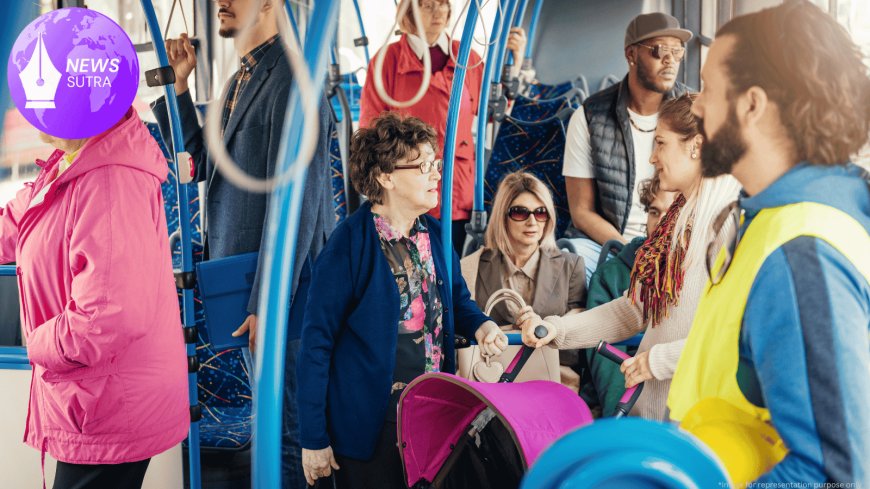The Car-Free Revolution: How U.S. Cities Are Reimagining Urban Life Without Vehicles
U.S. cities like New York and Portland are going car-free in a bold shift toward climate-friendly, pedestrian-first urban planning. Will it work?

In a move that signals a dramatic shift in urban planning, several major American cities are going car-free—or at least experimenting with car restrictions in central districts. This ambitious shift comes at a time when climate concerns, real estate innovation, and Gen Z-driven lifestyle changes are forcing city leaders to rethink what urban life should look like. Cities like New York, Boston, and Portland are leading the charge, turning once traffic-jammed streets into pedestrian-friendly havens. But can this radical transformation really work in a country long defined by car culture?
The Origins of the Car-Free Movement
America’s identity has been closely tied to the automobile for over a century. Highways, suburban sprawl, and drive-through convenience are part of the nation's DNA. But the consequences—congestion, pollution, rising emissions, and car-related fatalities—have reached critical mass.
The car-free movement began gaining momentum in Europe, with cities like Oslo, Amsterdam, and Madrid pioneering vehicle bans in downtown areas. Their success inspired American counterparts to take notice. In the U.S., the COVID-19 pandemic acted as a catalyst: with fewer cars on the road and more people walking or cycling, cities saw the potential of reclaiming their streets.
Key Cities Leading the Shift
New York City
New York has taken several bold steps. In Manhattan’s Financial District, certain streets have been permanently pedestrianized. The Open Streets program has been expanded, closing miles of roadway to car traffic during certain hours. Times Square, once gridlocked, now features plazas filled with pedestrians and cyclists.
City officials have also announced plans to implement congestion pricing by 2025, which will charge vehicles entering lower Manhattan—a model already used in cities like London.
Portland, Oregon
Portland, known for its environmental consciousness, has launched the Healthy Business Program, encouraging businesses to operate in car-free curb spaces. Additionally, the Central City in Motion plan redesigns streets to prioritize buses, bikes, and pedestrians.
The city aims to cut car traffic downtown by 25% in the next decade and drastically improve air quality and livability in the process.
Boston, Massachusetts
Boston’s Slow Streets initiative reduces speed limits and installs safety features in neighborhoods. More recently, the city has tested car-free weekends in areas like Newbury Street and parts of the Seaport District.
The goal? Create vibrant, walkable neighborhoods that draw both locals and tourists—while lowering carbon emissions.
Why This Matters: Climate, Health, and Economy
Going car-free isn’t just about traffic—it's a multi-pronged solution to pressing urban challenges:
-
Climate Change: According to the U.S. Environmental Protection Agency, transportation is the largest source of greenhouse gas emissions in the country. Reducing car use is vital to meeting climate targets.
-
Public Health: Cleaner air leads to fewer asthma cases, and more walkable cities encourage physical activity, combating obesity and related diseases.
-
Urban Economy: Pedestrian zones often boost local business. Cities like Copenhagen have shown that foot traffic can generate more revenue than car traffic. In the U.S., business owners in car-free zones often report increased footfall and customer satisfaction.
Challenges of Going Car-Free in the U.S.
Despite the clear benefits, going car-free is not without obstacles.
Car Culture and Infrastructure
Unlike Europe, American cities were largely built around the car. Suburban sprawl and inadequate public transit mean many residents still rely heavily on vehicles.
Equity Concerns
Critics argue that car bans could disproportionately impact low-income communities who can't afford to live close to downtown areas or rely on cars for work.
City planners must invest in equitable infrastructure—better transit access, bike-share programs, and inclusive pedestrian designs—to ensure everyone benefits from the transition.
Pushback from Drivers
As with any major change, there’s resistance. Drivers complain about restricted access, longer travel times, and limited parking. Advocacy groups argue that solutions must balance both pedestrian and driver needs.
Gen Z and the Rise of Urban Minimalism
The youngest generation of adults is changing everything. Gen Z is ditching the car in favor of sustainable, experience-driven lifestyles. Many prefer walkable communities, public transport, and local amenities over long commutes and car payments.
According to a 2024 report by Pew Research, nearly 55% of Gen Z adults in major cities do not own a car and have no plans to purchase one soon. Their influence is shaping city policies and real estate trends toward car-lite or car-free living.
Real Estate Reimagined
The car-free trend is also reshaping housing and development. Transit-oriented developments (TODs), bike-friendly buildings, and neighborhoods with zero-parking designs are becoming more popular. Some cities are even eliminating parking minimums, freeing up space for green areas, community zones, or additional housing.
In Los Angeles, once infamous for its car-centric sprawl, developers are now embracing car-optional living with projects focused around subway stations and bus corridors.
The Environmental Impact
Switching to car-free zones can significantly reduce CO₂ levels. In a 2023 pilot study in San Francisco’s Market Street, removing private vehicles led to:
-
A 25% drop in ambient pollution
-
A 30% increase in bike ridership
-
Zero pedestrian deaths in the zone
These figures provide powerful incentives for other cities to follow suit.
What's Next?
As momentum builds, other cities are considering car-free experiments. Chicago, San Francisco, Seattle, and Washington D.C. have launched studies or pilot programs. If successful, these efforts could scale nationally.
The Biden administration’s climate funding may also accelerate local car-free infrastructure, offering grants for transit development, EV charging, and bike lanes.
Conclusion: A Future Without Cars?
The idea of U.S. cities going car-free might have once sounded radical—but it’s quickly becoming a reality. While full implementation will take time and strategic planning, the benefits are hard to ignore: cleaner air, safer streets, healthier residents, and thriving local economies.
Whether America can fully embrace a car-free future remains to be seen. But as more cities take the plunge, one thing is clear—the streets are no longer just for cars. They're for people.









